Dissertation
3. The Growth of Branding
3.4 Updating the Brands
In 1997, the BBC's image and corporate identity across all its operations was updated and saw its old slanted underlined logo designed in 1986 far simplified. Still containing the initials BBC inside three boxes, these were now settled on their upright with the type set in Gill Sans. According to Lambie-Nairn, who was selected to oversee the branding of the corporation, the old slanted logo was dated, expensive to print and didn't work on screen. With no corporate guidelines, the corporation used zillions of logos
and was generating new ones at a rate of two a week. With the advent of digital and the launch of more channels and services, the BBC brand was being increasingly weakened.
Lambie-Nairn described the new logo as robust and elegant and solving all the technical problems in one hit
(Gilgrist, 1997). With guidelines that dictated that a channel, directorate, regional and other names should run to the right of the logo and also be set in Gill Sans, meant it all looked like it came from the same organisation.
It followed that with a new corporate identity, most elements of the corporation would have to be redesigned or altered to work alongside it. On television, BBC2 kept the popular 2's and although some idents were discontinued, for those that remained only the 2 was slightly enlarged and new BBC logo and channel name added, with further idents added to the collection over the following years (figure 3.4b). BBC1 again retained the globe, however it was given a new twist by using an orange air balloon styled as a globe, and floating it above different landmarks and regions across Britain. Lambie-Nairn again aimed to reposition the channel (Lambie-Nairn.com, 2002). The use of bright orange for the balloon was in strong contrast to the earthy browns, greens and yellows as well as the blues within the sky (Figure 3.4a)
Figure 3.4a - BBC ONE
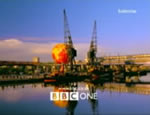
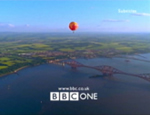
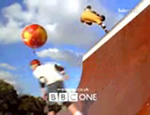
BBC1's image was given a new twist with an identity featuring a orange balloon flown over Britain. Later additions to the ident set showed images of people skateboarding, bungee jumping, in carnivals and at a market.
Figure 3.4b - BBC TWO
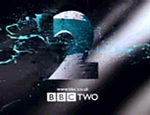
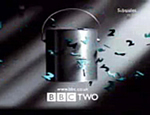
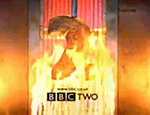
BBC2's idents were left pretty much untouched. A new addition to the collection at this time showed the strength of the identity. This featured a simple paint-pot that mimicked one of the first idents 'Paint'. However with more and more idents being added to the collection - some no longer featuring the viridian colour - such as 'Kebab' shown above, the brand was becoming increasingly weakened.
Figure 3.4c - CBBC
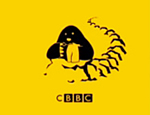
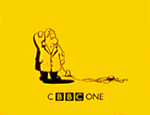
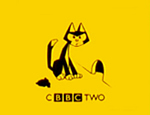
All of the BBC's children's output was given a new look, using just the colours yellow and black and a distinct use of simple animation.
Both channels kept the consistency seen in the last makeover, but this time all onscreen promotional material carried BBC ONE or BBC TWO centred at the bottom of the screen - this placement more suitable for the upcoming widescreen format used in digital television.
As for ITV, nearly every region was back to using individual identities - with only Grampian still using the original 1989 idents and graphics. By the middle of the nineties, ITV was entering a period of consolidation and mergers, threatening regional identity.
A few years after Yorkshire and Tyne Tees Television merged, the Managing Director of the combined group, Bruce Gyngell, decided to place the two stations under a single 'Channel 3' umbrella brand. The board at Yorkshire Television weren't keen about re-branding their station, but agreed to experiment with the idea at Tyne Tees, which was renamed Channel 3 North East. Its ident featured a large gold numeral '3' from which the words North East emerged, and was put together by a design company in Leeds. It was nothing new or original, in fact it was pretty bland, and reportedly created in an afternoon. An extended ident was also produced, that sometimes featured before the local news, in which various landscapes from the region where intertwined with groups of three (three swimmers, three kids on swings etc) as well as local personalities from the channel.
However this was as far as the brand went, and viewers were confronted with pretty much of what went before. It also caused confusion with continuity announcers often presenting the channel as Tyne Tees Television, broadcasting on Channel 3 in the North-East
or similar mouthfuls, matched with an ident including both Channel 3 North East, and Tyne Tees names. As a result it wasn't well received by the public and only lasted a year. The Yorkshire version of the ident was more faithful to the original 'Chevron' identity, with the gold '3' only seen at the beginning of its ident. When Yorkshire Tyne Tees was taken over by Granada, the Channel 3 brand was scraped and the Tyne Tees name reinstated.
Central was also another regional company to be taken over, this time by Carlton Communications, holder of the London weekday franchise, in 1994. In it's first attempt at consistency across the two franchises in late 1996, both Central and Carlton in London used a set of idents designed to complement the networks programming. Here either the word CARLTON or CENTRAL (both visually similar) set in Gill Sans, morphed into rows of houses (Coronation Street), had their letters rearranged (for use before game shows), were spelt out with the phonetic alphabet (The Bill) or had footballs struck at them, and many other such treatments. Usually set in white against bright colours, this was based more on Carlton's brand history than Central's, but at least the Central name was retained.
However this only lasted two years, before the inevitable happened and all three regions now owned by the group were simply named Carlton, and used a new common identity. This contained Carlton's logo that had originally been designed to warm viewers to the name when it took over the London weekday franchise in 1992, with the placement of the T within the L to hint at LON for London.
Yet again, the ITV network was divided and segregated. Almost ten years after English and Pockett designed it's first identity, ITV now wanted an identity that 'better reflected the channels mass appeal and unique position in British TV as the channel closest to peoples heart' and one that 'moved away from a distant, corporate image to a more consumer friendly brand' (Futurebrand.com, 2002). English and Pockett was again the company responsible for this new image, and saw a new logo with yellow lowercase ITV initials set inside a blue rectangle. These colours were chosen to reflect the networks heritage and took colours predominating in the logos of most regional companies. A year later, its onscreen implementation was introduced, and again a dual branding system was devised for nine of the 14 regional companies. 16 different street level sequences were created showing activities of ordinary people in Britain - such as moving house, hanging out the washing, painting a floor - that revealed the heart motive at the end of the sequence (figure 3.4d)
Figure 3.4d - The heart of ITV
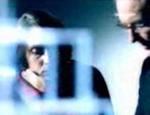
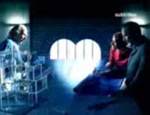
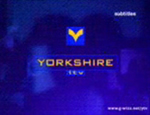
Here a group of architects are seen working around a table, before the heat motif is revealed, followed by a regions name and logo.
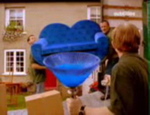

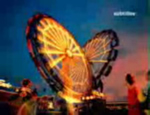
16 heart sequences were created in total. Here 3 are shown - moving house, searching in woods and at a funfair.
That is not to say that the hearts identity was universally appropriate, as was proven in the LWT region. With a long-standing reputation as the region for producing the majority of the networks weekend entertainment, and in London exclusively seen as an identity for the weekend, the hearts theme in its original format just didn't fit. A more appropriate version was devised in which a camera panned across a video wall showing clips from the pervious hearts idents as well as LWT branding (figure 3.4e). The music was also changed to be far more upbeat.
Figure 3.4e - LWT
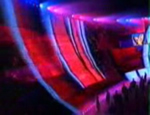
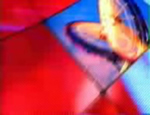
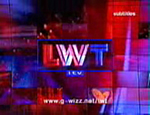
However the heart sequences weren't appropriate for the LWT region, where it was given a more livelier treatment.
Only nine of the 14 regions used these idents. Ulster Television (UTV) had by now developed a completely separate identity to that of ITV, and the Scottish regions (Scottish and Grampian) now both owned by Scottish Media Group (SMG) opted out and had a separate identity created involving a blue square and images of Scots of all ages in daily activities. Also, the three Carlton Communication owned regions (Central, Westcountry and Carlton) since renamed Carlton used an alternative - though still based on the hearts theme. The Lambie-Nairn produced idents indicated that Carlton was the star of the ITV network and was reflected on-screen with animations of various hearts that have a star in the corner before ending with a standardised Carlton title. In effect, ITV was now seemingly four different regions: UTV, and those owned by Carlton, Scottish and Granada media groups (Figure 3.4f)
Figure 3.4f - Carlton, Scottish and UTV regions retained separate identities
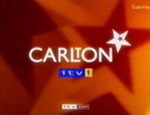
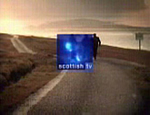

Carlton, Scottish and UTV regions didn't use the hearts sequence, the later two no longer using the ITV name.
Whilst the BBC tried to reflect its public service image (bringing the world to every corner of Britain), it brought with it a recognition of the rest of Britain. Indeed, it was the first time that BBC1 had used such strong regional elements in its identity. ITV was also trying to display its credentials as not only Britain's most popular channel, but as that closest to peoples hearts. But this was at a time when many regional names and identities were disappearing and as pointed out before these provided strong links with each regions viewers. It turned out that whilst the BBC was becoming more regionalised (a fact reflected in its programme scheduling and budgets), ITV was becoming more centralised, both on and off screen.
Dissertation
My degree dissertation, submitted June 2002.
1. The Visuality of TV
2. What Went Before?
3. The Growth of Branding
4. News Presentation
Conclusion
Read Offline
- Print Version (PDF)
- The full submitted text.
- Requires Acrobat Reader
Shop with Amazon.co.uk
- Brand Identity for Television
- Lambie-Nairn
